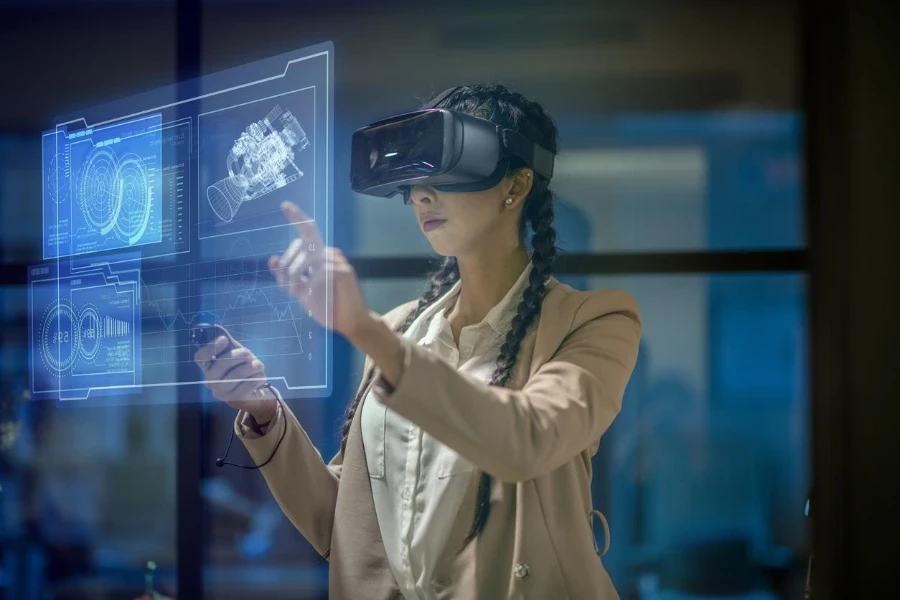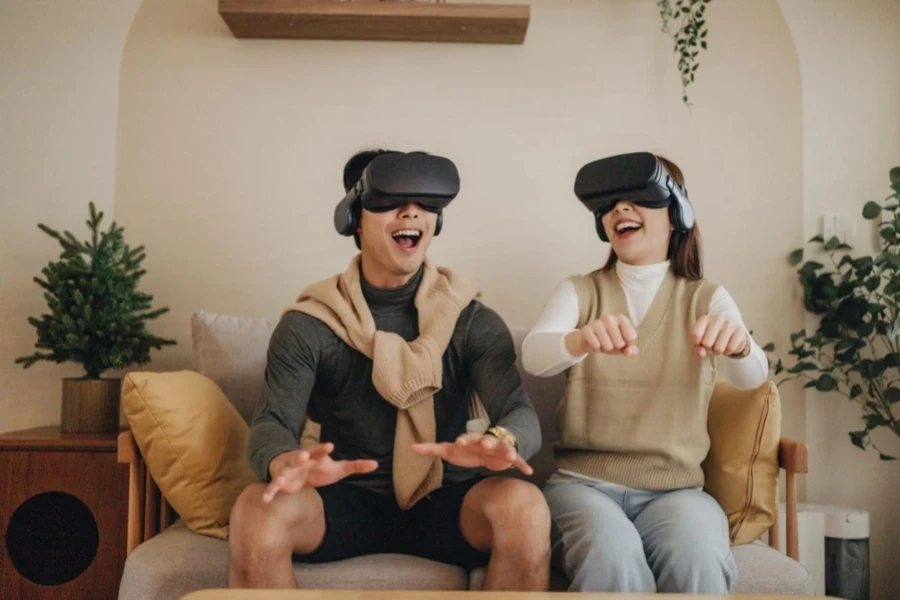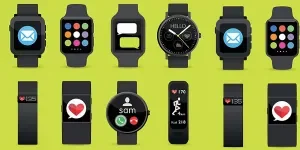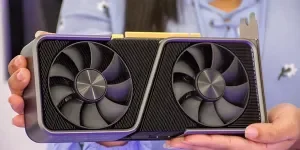Virtual reality gear (VR headsets) has quickly become indispensable in fields of work today. These immersive gadgets allow individuals to engage with digital worlds and are revolutionizing areas such as training programs in workplaces and schools as well as healthcare and entertainment sectors.
In the realm of technology progressions lies the realm of VR headsets that now present enhanced comfort levels alongside functionality and flexibility – characteristics that hold value across various professional domains today. In 2025, making an informed decision will ensure that businesses invest in the most effective and efficient solutions for their needs.
Table of Contents
Understanding the Types and Uses of VR Headsets
Recent Market Insights: Growth and Trends
Leading VR Headsets and Their Features in 2025
Conclusion
Understanding the Types and Uses of VR Headsets

Standalone VR Headsets
Standalone VR headsets that work independently have caught the eye for being easy to use and straightforward in design. They operate without needing equipment like a computer or gaming console. With their built-in processing capabilities, such headsets are great for individuals looking to have a hassle-free VR encounter. These devices are usually lighter and easier to carry compared to other models, making them an excellent choice while traveling. Moreover, they provide a solution that removes the need for configuration and ensures compatibility with various devices, which appeals to novices and companies seeking flexible VR options.
PC-Tethered VR Headsets
PC-connected virtual reality (VR) headsets offer top-notch performance for users seeking detailed experiences. They require a computer connection to handle complex environments and deliver real-time interactions seamlessly without any performance constraints. This type of VR headset is favored in settings that require simulations, gaming, and design tools. While they may need some configuration, like having a computer and cables set up with them upfront, their top-notch graphics performance and processing prowess make them the preferred option for specific activities that demand high accuracy and precision.
Console-Specific VR Headsets
Special VR headsets designed for specific gaming consoles. They are custom-made to enhance the gaming experience for each console user group by fine-tuning performance and ensuring smooth compatibility with console hardware settings. They deliver good visuals and precise control responses, which are ideal for gameplay sessions. These headsets excel in providing high-quality graphics and motion-tracking capabilities thanks to their integration with consoles. The result is a virtual reality journey tailored for gamers and interactive software for consumers seeking a VR experience.
Mixed Reality (AR/VR) Headsets
Leading-edge advanced technology solutions are Mixed Reality headsets, which combine virtual reality (VR) with augmented reality (AR). By combining digital components with the physical world, these gadgets provide a combined AR/VR experience that improves interactivity. For sectors such as education, healthcare, and training, where real-time virtual object overlays in the actual world might offer contextual information, this is especially important. From collaborative projects to hands-on simulations requiring both physical and digital interactions, mixed reality headsets’ adaptability makes them perfect for sophisticated uses.
Recent Market Insights: Growth and Trends

Explosive Growth of the VR Industry
Driven by growing acceptance in many fields, from gaming and entertainment to education, healthcare, and business solutions, the VR helmet market is fast expanding. Reflecting a phenomenal compound annual growth rate (CAGR) of 44.3% throughout the projection period. The worldwide VR market was valued at over US$ 13.16 billion as of 2023 and is expected to reach US$ 85.52 billion by 2020. The increase in consumer demand for immersive experiences and the spread of VR technologies outside of the entertainment industry support this development.
Particularly, the growing usage of VR for virtual tourism, simulation, and training has inspired fresh investments. Major drivers of this increase are expected to include lowering hardware prices and improving content availability. Innovations like the integration of artificial intelligence and machine learning to enhance user experiences and VR hardware will drive demand for VR devices even further, claims Grand View Research.
Furthermore, making the technology more accessible and appealing to a wider spectrum of consumers and businesses are technological advancements in headgear, like better ergonomics, greater display resolutions, and the move towards wireless VR solutions.
Technology and Innovation Trends
Looking ahead to 2025, a number of newly developing factors should greatly impact VR technology’s direction. The twoo most expected changes are improvements in foveated rendering and eye-tracking. By varying the focus of virtual environments depending on where the user is looking, eye-tracking technology will enable more realistic and responsive VR experiences. By lowering the computing load in periphery portions of the screen, this invention will not only increase realism but also maximize performance.
The shift towards wireless VR solutions, which let users enjoy untethered VR with reduced latency, is still another important trend. Greater freedom of mobility, when more potent wireless processors are produced, will help users maximize immersion. Leaders in the sector, including Meta and Sony, are substantially spending on developing wireless VR headsets that offer a flawless user experience free from cable restrictions.
Leading VR Headsets and Their Features in 2025

High-End Models for Professionals
Virtual reality is advancing rapidly with top-tier models that excel in performance and are especially useful in professional settings such as simulation design and medical training. These headsets are tailored for users who need top-notch optical quality and accurate motion-tracking capabilities to handle complex tasks effectively. These headphones are designed to offer better experiences and precise visual quality for functions that demand accuracy and detail.
Affordable Models for General Use
Affordable VR headsets are showing amazing performance for regular use without the hefty price tag. These models provide excellent visuals, steady motion tracking, and responsive controllers; usually, they concentrate on simplicity of use, accessibility, and strong functioning. They balance cost and performance even though they lack the exact standards of their high-end equivalents. For individuals looking for solid VR experiences for gaming, educational uses, or leisure virtual explorations, reasonably priced models are perfect.
Innovative Features in 2025 Models

Several creative elements expected tobe broughtg about by the VR landscape in 2025 will transform human interaction with virtual surroundings. With many new models providing untethered experiences, hence allowing more freedom of movement, wireless connectivity has become a main concern. Furthermore, improvements in haptic feedback—that is, more exact physical sensations—increase immersion and hence make interactions more lifelike. AI-driven interactivity is also developing in which virtual environments’ realism and responsiveness are enhanced by systems dynamically adjusting to user activities.
Best All-Rounder Models for Versatility
The top VR headsets that cater to various needs excel in balancing gaming experiences with applications and overall entertainment value. These devices are adaptable and provide good performance for high-quality gaming, VR education, and simulation purposes. Equipped with field-of-view options and advanced tracking capabilities combined with refresh rates, these headsets are crafted to offer a comprehensive user experience across different sectors. These headphones provide a blend of individuals seeking versatility in virtual reality gadgets while maintaining top-notch performance.
Conclusion

Choosing the right VR headsets in 2025 involves carefully weighing performance and comfort against cost for industry uses. Professionals must balance features and ease of use to ensure their investments meet requirements and future expansion. Companies should prioritize dependability and scalability to keep up with the evolving tech landscape, whether for top-of-the-line products or more budget-friendly alternatives. With advancements such as AI integration and enhanced connectivity on the horizon, making the right choice in VR solutions will boost returns on investment and bolster overall operational efficiency.



